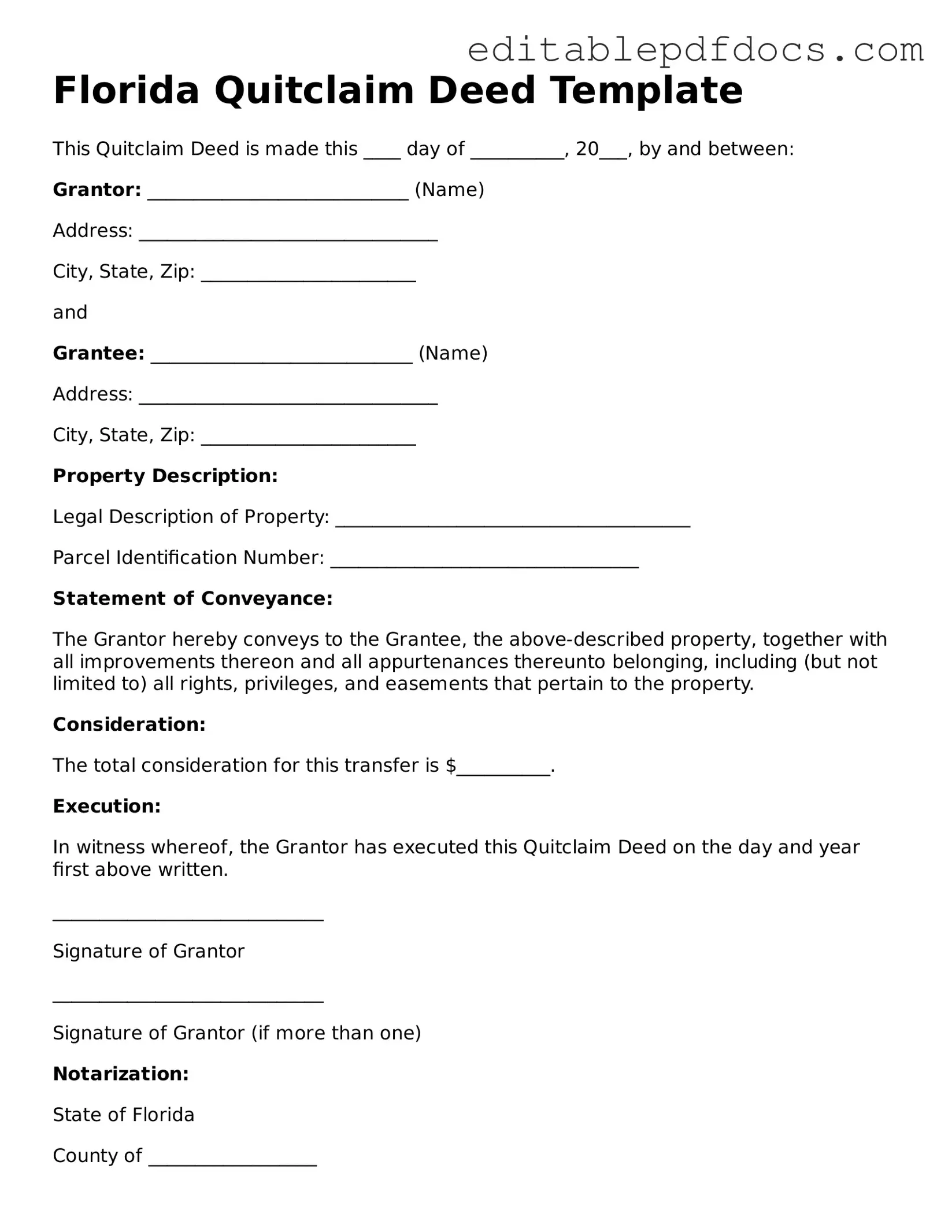The Florida Quitclaim Deed form serves as a vital tool for property transfers, allowing individuals to convey their interest in real estate without making any guarantees about the title's validity. This form is particularly useful in situations where the transferor may not have complete ownership rights or when the parties involved are familiar with each other, such as family members or friends. By utilizing a Quitclaim Deed, the grantor relinquishes any claim to the property, effectively transferring whatever interest they hold to the grantee. It's important to note that this type of deed does not offer any warranties or assurances, which can lead to potential complications if title issues arise. Completing the form requires specific information, including the names of the parties, a legal description of the property, and the signature of the grantor, often necessitating notarization. Understanding the implications of using a Quitclaim Deed is crucial for anyone considering this option, as it can have significant legal and financial consequences. Whether you're looking to resolve a property dispute, transfer property as part of a divorce settlement, or simply wish to gift real estate, knowing how to properly execute a Florida Quitclaim Deed is essential for a smooth transaction.
